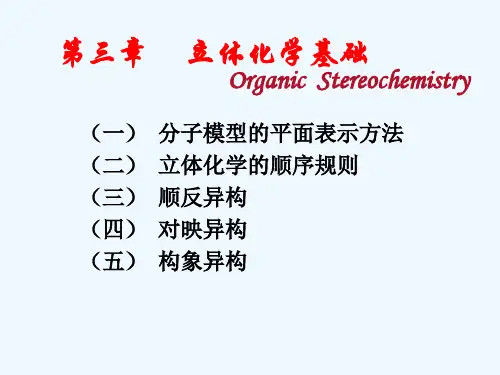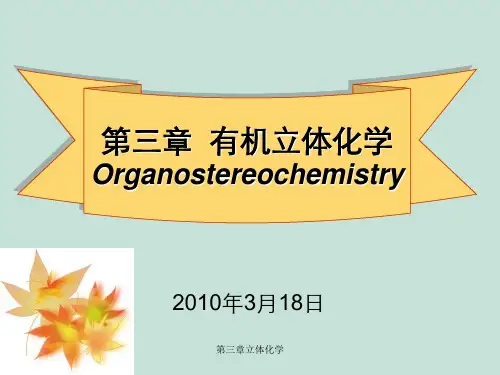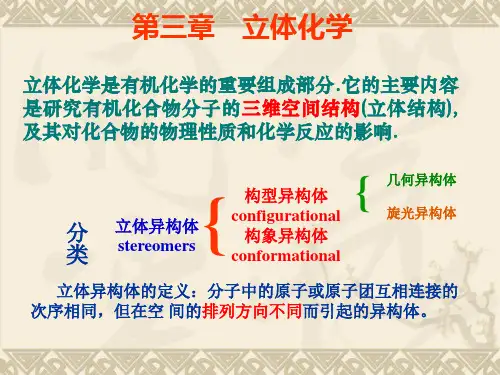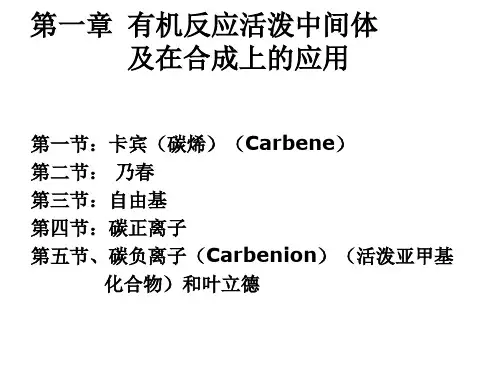三、反应机理的研究方法 3. 同位素标记
在机理研究中常常用同位素效应和同位数标记来 确定反应历程。
三、反应机理的研究方法 3. 同位素标记
(1)同位素效应
最常用的是用氘来代替氕,当反应底物中的 一个原子被它的同位素取代后,对它的化学反应 性没有影响,但反应速度有显著的影响。同位素 效应分一级同位素效应和二级同位素效应。 一级同位素效应:在决定速度步骤中与同位 素直接相连的键发生断裂的反应中所观察到的效 应, 其值通常在KH/KD 为2或更高。 二级同位素效应:在反应中与同位素直接相 连的键不发生变化,而是分子中其它化学键变化 所观察到的效应,其值通常在KH/KD = 0.7-1.5范 围内。
N
CN
-
-
O
+
O C-
O N
O C N H
N
hydrolysis ( NH
3
)
H OH O H
+
O H C O
-
N
O C
N O
O hydrolysis COOH + NO 2
-
an acyl nit rit e
Rosenblum Observations (1960)
Observation I: Inst ead of nit rite, molecular nit rogen was a by-product of t he von Richt er reaction. Apparent ly, in t he 1871 von Richt er paper, nitrit e had never been demonstrated to be a by-product. It had been deduced based on stoichiometry considerations. In t he revised Bunnet t mechanism, amm onia and nit rit e are stipulat ed by-products of the von Richter reaction. Ammonia and nit rit e can react t o form ammonium nitrit e which, upon heat ing, decom poses t o give molecular nitrogen and wat er. NH 3 t o an on-going von Richt er reaction, Upon addit ion of t he only molecular nit rogen obt ained contained no nitrogen-15! If t he revised Bunnet t mechanism were correct , the added NH 3 and the expelled NO 2 (from t he last st ep) should have produced N










